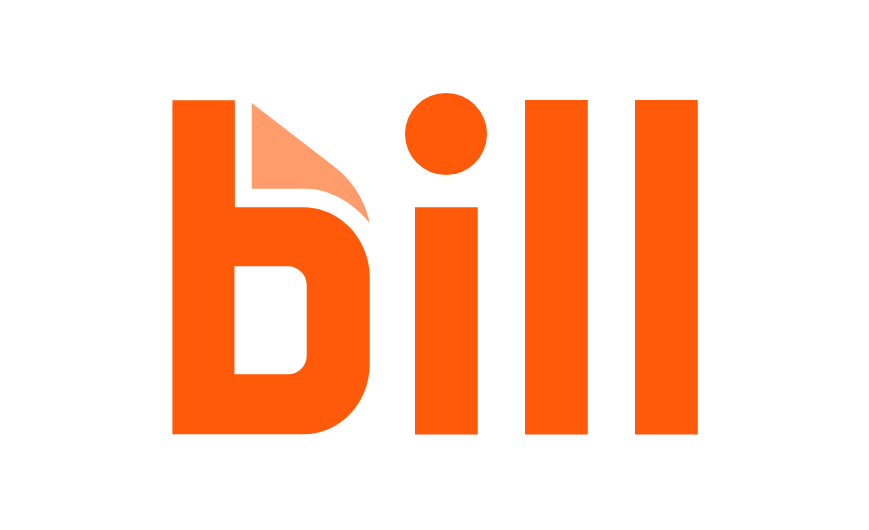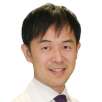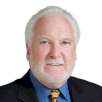Attendees are enthusiastic about the scientific programme at ROOTS SUMMIT 2022. (All photographs: DTI)
A ROOTS SUMMIT attendee enjoying the hands-on learning.
Dr Zaher Altaqi discussing a minimally invasive approach to removal of fractured files.
Dental endodontic teeth with roots for endodontic practice.
Dr Jenner Argueta holding a course on the management of complex clinical situations with the help of 3D magnification.
Dr Marian Fanica during his hands-on course on post-endodontic treatment of teeth with large areas of destruction.
ROOTS SUMMIT started on Thursday with nine hands-on courses.
From left: ROOTS SUMMIT Co-Chairman Dr Freddy Belliard, Dr Zaher Altaqi and industry representative Hazel Hendy at ROOTS SUMMIT 2022.
Hands-on courses captured the attention of attendees and brought new procedural possibilities to the forefront.
Getting started with practice at a hands-on course.
ROOTS SUMMIT 2022 Scientific Chairman Dr David E. Jaramillo opening the event.
The conference venue in action.
Dr Meetu Ralli Kohli presenting on bioceramics in endodontics.
The audience listening very intently to Dr Meetu Ralli Kohli’s presentation.
Dr Francesc Abella in his presentation on digital planning in intentional replantation and auto-transplantation.
Dr Jaime J. Silberman discussing endodontic microsurgery.
The lovely ROOTS SUMMIT team welcoming participants.
ROOTS SUMMIT 2022 attendees in the exhibition hall.
Demonstration of R-Motion files at the FKG Dentaire booth.
Attendees of ROOTS SUMMIT 2022 were able to test the Axis dental microscope with high magnification (Global Surgical Corp.).
Attendees listen to a poster presentation. The posters are displayed on various screens across the venue.
Friends were easy to come by at U Fleků brewery, with lively entertainment and great food to add to the mood.
While at ROOTS SUMMIT, presenters, exhibitors and attendees were able to conduct some valuable networking and forge new friendships on Friday evening.
ROOTS SUMMIT attendees were serenaded with traditional accordion playing.
Once they realised how much fun was to be had, many attendees registered for the evening programme at U Fleků and were rewarded with great conversation, food and music.
Attendees were eager to celebrate with renowned presenter Gianluca Gambarini in a more personal setting at the historic U Fleků brewery.
Dr Radek Mounajjed, joint presentation titled “Root to crown: advanced adhesive endodontic/restorative concept” was well received by attendees.
Among other valuable skills, Drs Radek Mounajjed and Daniel Černý (pictured) taught ROOTS SUMMIT attendees how to identify clinically relevant factors for reconstruction of nonvital teeth and teeth with challenged vitality.
Participants at the CERKAMED booth, the silver sponsor of ROOTS SUMMIT 2022.
Interested attendees can check out the FKG booth to learn more about R-Motion files.
Participants are happy to be at this year’s meeting and meet fellow dentists.
Representatives of META BIOMED are happy to answer any questions about their products.
EdgeEndo offers endodontic files, points, obturators and verifiers.
Dr Hugo Dias impressed ROOTS SUMMIT attendees with a presentation titled “Management of pulp canal obliteration: Guided approach and tips to achieve mechanical and biological goals of endodontic treatment” and shared a variety of new approaches to performing root canal access.
DHM Dental showcases dental mirror systems.
Attendees of the 2022 ROOTS SUMMIT were treated to an informative lecture from Dr Igor Tsesis titled “Evidence-based treatment choices in modern endodontic treatment”.
CJ-Optik Flexion dental microscope.
Demonstration of the OMS 3200 dental microscope at the Zumax booth.
It's all smiles at the EDMax booth.
FKG swiss endo cordless endo motor with apex locator.
The endostar booth attracted professionals from around the globe to learn more about their products.
ROOTS SUMMIT attendees were excited to visit the COXO booth at the Cubex Center Prague.
Among other products, Septodont showcases its mineral-based root canal sealer BioRoot RCS.
Prof. Gianluca Gambarini presented on 2D versus 3D endodontics.
From left: Dr David E. Jaramillo, scientific chairman, and co-chairmen Dr Freddy Belliard and Stephen Jones.
The lecture of Dr Stephen Buchanan was the final highlight of ROOTS SUMMIT 2022.



 Austria / Österreich
Austria / Österreich
 Bosnia and Herzegovina / Босна и Херцеговина
Bosnia and Herzegovina / Босна и Херцеговина
 Bulgaria / България
Bulgaria / България
 Croatia / Hrvatska
Croatia / Hrvatska
 Czech Republic & Slovakia / Česká republika & Slovensko
Czech Republic & Slovakia / Česká republika & Slovensko
 France / France
France / France
 Germany / Deutschland
Germany / Deutschland
 Greece / ΕΛΛΑΔΑ
Greece / ΕΛΛΑΔΑ
 Italy / Italia
Italy / Italia
 Netherlands / Nederland
Netherlands / Nederland
 Nordic / Nordic
Nordic / Nordic
 Poland / Polska
Poland / Polska
 Portugal / Portugal
Portugal / Portugal
 Romania & Moldova / România & Moldova
Romania & Moldova / România & Moldova
 Slovenia / Slovenija
Slovenia / Slovenija
 Serbia & Montenegro / Србија и Црна Гора
Serbia & Montenegro / Србија и Црна Гора
 Spain / España
Spain / España
 Switzerland / Schweiz
Switzerland / Schweiz
 Turkey / Türkiye
Turkey / Türkiye
 UK & Ireland / UK & Ireland
UK & Ireland / UK & Ireland
 Brazil / Brasil
Brazil / Brasil
 Canada / Canada
Canada / Canada
 Latin America / Latinoamérica
Latin America / Latinoamérica
 USA / USA
USA / USA
 China / 中国
China / 中国
 India / भारत गणराज्य
India / भारत गणराज्य
 Japan / 日本
Japan / 日本
 Pakistan / Pākistān
Pakistan / Pākistān
 Vietnam / Việt Nam
Vietnam / Việt Nam
 ASEAN / ASEAN
ASEAN / ASEAN
 Israel / מְדִינַת יִשְׂרָאֵל
Israel / מְדִינַת יִשְׂרָאֵל
 Algeria, Morocco & Tunisia / الجزائر والمغرب وتونس
Algeria, Morocco & Tunisia / الجزائر والمغرب وتونس
 Middle East / Middle East
Middle East / Middle East
:sharpen(level=0):output(format=jpeg)/up/dt/2024/04/EvoDent-showcases-latest-dental-solutions-at-Krakdent-2024.jpg)
:sharpen(level=0):output(format=jpeg)/up/dt/2024/04/Osstem-Implant-lends-a-hand.jpg)
:sharpen(level=0):output(format=jpeg)/up/dt/2024/04/Study-links-e-cigarette-use-with-increased-risk-of-heart-failure.jpg)
:sharpen(level=0):output(format=jpeg)/up/dt/2024/04/Clearcorrect-launches-new-digital-solutions-globally.jpg)
:sharpen(level=0):output(format=jpeg)/up/dt/2024/04/High-quality-digitalisation-for-automation-precision-and-customer-satisfaction-Fig.-1.jpg)











:sharpen(level=0):output(format=png)/up/dt/2023/03/ACTEON_NEW-logo_03-2024.png)
:sharpen(level=0):output(format=png)/up/dt/2020/02/Camlog_Biohorizons_Logo.png)
:sharpen(level=0):output(format=png)/up/dt/2014/02/3shape.png)
:sharpen(level=0):output(format=png)/up/dt/2014/02/Du%CC%88rr_Dental.png)
:sharpen(level=0):output(format=png)/up/dt/2023/07/DirectaDentalGroup_Logo_2023_03_2lines_lowres.png)
:sharpen(level=0):output(format=png)/up/dt/2014/02/FKG.png)
:sharpen(level=0):output(format=png)/up/dt/2022/06/RS_logo-2024.png)
:sharpen(level=0):output(format=jpeg)/up/dt/2022/05/If-its-better-for-the-body-its-better-for-the-patient.jpg)
:sharpen(level=0):output(format=jpeg)/up/dt/2023/03/anishahallhoppe1-300x300.jpg)
:sharpen(level=0):output(format=jpeg)/up/dt/2022/05/Atendees-are-enthusiastic-about-the-scientific-progamme-at-ROOTS-Summit-2022.jpg)
:sharpen(level=0):output(format=jpeg)/up/dt/2022/05/A-ROOTS-Summit-attendee-enjoying-the-hands-on-learning.jpg)
:sharpen(level=0):output(format=jpeg)/up/dt/2022/05/Dr-Zaher-Altaqi-discussing-the-minimally-invasive-broken-files-removal-approach.jpg)
:sharpen(level=0):output(format=jpeg)/up/dt/2022/05/Dental-endodontic-teeth-with-root-for-endodontic-practice-.jpg)
:sharpen(level=0):output(format=jpeg)/up/dt/2022/05/Dr-Jenner-Argueta-holding-a-course-on-the-management-of-complex-clinical-situations-with-the-help-of-3D-magnifications.jpg)
:sharpen(level=0):output(format=jpeg)/up/dt/2022/05/Dr-Marian-Fanica-during-his-hands-on-course-on-post-endodontic-treatment-of-teeth-with-large-destructions.jpg)
:sharpen(level=0):output(format=jpeg)/up/dt/2022/05/The-ROOTS-Summit-was-kicked-off-on-Thursday-with-9-hands-on-courses.jpg)
:sharpen(level=0):output(format=jpeg)/up/dt/2022/05/From-left-Co-chairman-Dr-Freddy-Belliard-Dr-Zaher-Altaqi-and-industry-representative-Hazel-Hendy-at-the-ROOTS-Summit-2022.jpg)
:sharpen(level=0):output(format=jpeg)/up/dt/2022/05/Hands-on-courses-captured-the-attention-of-attendees-and-brought-new-procedural-possibilities-to-the-forefront.jpg)
:sharpen(level=0):output(format=jpeg)/up/dt/2022/05/Getting-busy-at-the-hands-on-course.jpg)
:sharpen(level=0):output(format=jpeg)/up/dt/2022/05/Scientific-chairman-Dr-David-E.-Jaramillo-opening-the-ROOTS-Summit-ceremony-2.jpg)
:sharpen(level=0):output(format=jpeg)/up/dt/2022/05/The-conference-venue-in-action.jpg)
:sharpen(level=0):output(format=jpeg)/up/dt/2022/05/Dr-Meetu-Ralli-Kohli-presenting-on-bioceramics-in-endodontics.jpg)
:sharpen(level=0):output(format=jpeg)/up/dt/2022/05/The-audience-listens-very-intently-to-Dr-Meetu-Ralli-Kohlis-presentation.jpg)
:sharpen(level=0):output(format=jpeg)/up/dt/2022/05/Francesc-Abella-in-his-seminar-on-digital-planning-in-intentional-replantation-and-autotransplantation.JPG.jpg)
:sharpen(level=0):output(format=jpeg)/up/dt/2022/05/Dr-Jaime-J.-Silberman-discussing-endodontic-microsurgery.jpg)
:sharpen(level=0):output(format=jpeg)/up/dt/2022/05/The-lovely-ROOTS-team-welcoming-the-guests.jpg)
:sharpen(level=0):output(format=jpeg)/up/dt/2022/05/ROOTS-Summit-2022-attendees-in-the-exibit-hall.jpg)
:sharpen(level=0):output(format=jpeg)/up/dt/2022/05/Demonstration-of-R-Motion-files-at-the-FKG-booth.jpg)
:sharpen(level=0):output(format=jpeg)/up/dt/2022/05/Attendees-got-to-test-the-Axis-dental-microscope-with-high-magnification.jpg)
:sharpen(level=0):output(format=jpeg)/up/dt/2022/05/DSCF2681.jpg)
:sharpen(level=0):output(format=jpeg)/up/dt/2022/05/DSCF3032.jpg)
:sharpen(level=0):output(format=jpeg)/up/dt/2022/05/DSCF3043.jpg)
:sharpen(level=0):output(format=jpeg)/up/dt/2022/05/DSCF3001.jpg)
:sharpen(level=0):output(format=jpeg)/up/dt/2022/05/DSCF3059.jpg)
:sharpen(level=0):output(format=jpeg)/up/dt/2022/05/DSCF3058.jpg)
:sharpen(level=0):output(format=jpeg)/up/dt/2022/05/DSCF3131.jpg)
:sharpen(level=0):output(format=jpeg)/up/dt/2022/05/DSCF3178.jpg)
:sharpen(level=0):output(format=jpeg)/up/dt/2022/05/DSC_0010.jpg)
:sharpen(level=0):output(format=jpeg)/up/dt/2022/05/DSC_0008.jpg)
:sharpen(level=0):output(format=jpeg)/up/dt/2022/05/DSC_0055.jpg)
:sharpen(level=0):output(format=jpeg)/up/dt/2022/05/DSC_0021.jpg)
:sharpen(level=0):output(format=jpeg)/up/dt/2022/05/DSC_0025-rotated.jpg)
:sharpen(level=0):output(format=jpeg)/up/dt/2022/05/DSC_0369.jpg)
:sharpen(level=0):output(format=jpeg)/up/dt/2022/05/DSC_0031.jpg)
:sharpen(level=0):output(format=jpeg)/up/dt/2022/05/DSCF3243.jpg)
:sharpen(level=0):output(format=jpeg)/up/dt/2022/05/CJ-Optik-Flexion-dental-microscope.jpg)
:sharpen(level=0):output(format=jpeg)/up/dt/2022/05/Demonstration-of-the-OMS-3200-dental-microscope-at-the-Zumax-booth.jpg)
:sharpen(level=0):output(format=jpeg)/up/dt/2022/05/Its-all-smiles-at-the-EDMax-booth.jpg)
:sharpen(level=0):output(format=jpeg)/up/dt/2022/05/FKG-swiss-endo-cordless-endo-motor-with-apex-locator.jpg)
:sharpen(level=0):output(format=jpeg)/up/dt/2022/05/Its-getting-busy-at-the-endostar-booth.jpg)
:sharpen(level=0):output(format=jpeg)/up/dt/2022/05/ROOTS-SUMMIT-2022-attendee-examining-COXO-products.jpg)
:sharpen(level=0):output(format=jpeg)/up/dt/2022/06/IMG_2682-rotated.jpg)
:sharpen(level=0):output(format=jpeg)/up/dt/2022/05/DSC_0068.jpg)
:sharpen(level=0):output(format=jpeg)/up/dt/2022/05/DSCF3285.jpg)
:sharpen(level=0):output(format=jpeg)/up/dt/2022/05/ROOTS-SUMMIT-Stephen-Buchanan.jpg)
:sharpen(level=0):output(format=jpeg)/up/dt/2022/05/Endodontics-is-more-artisan.jpg)
:sharpen(level=0):output(format=jpeg)/up/dt/2022/06/ROOTS-SUMMIT-makes-great-comeback-in-Prague.jpg)







:sharpen(level=0):output(format=jpeg)/up/dt/2023/11/ROOTS-SUMMIT_Dr-Rajiv-Patel.jpg)
:sharpen(level=0):output(format=jpeg)/up/dt/2023/09/ROOTS-SUMMIT-2024_Dr-Antonis-Chaniotis.jpg)
:sharpen(level=0):output(format=jpeg)/up/dt/2023/11/ROOTS-SUMMIT-calls-for-submissions-and-launches-roots-magazine-contest.jpg)
:sharpen(level=0):output(format=jpeg)/wp-content/themes/dt/images/3dprinting-banner.jpg)
:sharpen(level=0):output(format=jpeg)/wp-content/themes/dt/images/aligners-banner.jpg)
:sharpen(level=0):output(format=jpeg)/wp-content/themes/dt/images/covid-banner.jpg)
:sharpen(level=0):output(format=jpeg)/wp-content/themes/dt/images/roots-banner-2024.jpg)
To post a reply please login or register